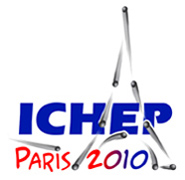Speaker
Mercedes Minano Moya
(Instituto de Fisica Corpuscular (IFIC) UV-CSIC)
Description
It is foreseen to increase the luminosity of the Large Hadron Collider (LHC) at CERN by a factor ten, with the upgraded machine dubbed Super-LHC or sLHC. The ATLAS experiment will require a new tracker for sLHC operation. In order to cope with the increase in pile-up backgrounds at the higher luminosity, an all silicon detector is being designed. The new strip detector will use significantly shorter strips than the current SCT in order to minimise the occupancy. As the increased luminosity will mean a corresponding increase in radiation dose, a new generation of extremely radiation hard silicon detectors is required. Extensive R&D programmes are underway to develop silicon sensors with sufficient radiation hardness. In parallel, new front-end electronics and readout systems are being designed to cope with the higher data rates. The challenges of powering and cooling a very large strip detector will be discussed. Ideas on possible schemes for the layout and support mechanics will be shown.
Primary author
Prof.
Michel Lefebvre
(University of Victoria)




